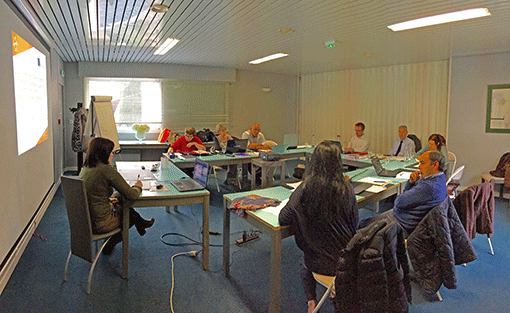“What skills, knowledge and competences are required for manufacturing European luxury and high-end shoes? How to become a “Taylor-Made Footwear Technician”?” Soon, the European project “High-End Shoe (HES) - Innovative Training for Luxury Footwear Manufacturing” will provide the necessary training material to help European companies to enhance the manufacturing of high-end and luxury footwear in Europe, an object of desire by worldwide consumers.
Since early 2015, the Erasmus+ project “High-End Shoe (HES) - Innovative Training for Luxury Footwear Manufacturing” aims to reinforce the added-value of European luxury and high-end footwear by updating and revising the occupational profile “Taylor-Made Technician”, and developing the necessary vocational training course focused on IT technology and on-site modules. The new profile, with the skills and knowledge required, is expected to be included in the national catalogues of the main manufacturing countries in Europe.
The first project outcome - a research study on the characteristics and training needs required – was recently presented and discussed by the project partners from Belgium, Czech Republic, Italy, France and Portugal in Romans, France, home of the renowned International Footwear Museum that exhibits more than 20.000 pieces belonging to 4.000 years of history and different cultures. The study, carried out in close cooperation with more than 30 companies of the luxury segment, illustrates what they consider as the major features of this market segmentation’ categories: from the exclusivity and handcrafted of the “supreme luxury” to the “accessible luxury” characterised by good materials but low personalisation.
The companies interviewed also agree on three main features characterising a luxury and a high-end company: the high-skilled employees, the “Made in Europe” products, and the selective choice of distribution channels. “Made in Europe” is also one of the features that consumers most associate with luxury and high-end footwear, together with the high quality of materials – in particular the tanning of the skin- and the perfect fitting. On the manufacturing processes, companies underline that the making the last and the pattern cutting were phases particularly influencing the achievement of the product features.
Footwear companies recognise the need to invest on training in order to maintain the excellence on manufacturing high-end products. In this regard, they agree that training is particularly required in the different steps of pattern/cutting, clicking and closing/ stitching processes. Consequently, project partners are now engaged in revising and updating the technical profile as well as the necessary training modules for future technicians to become specialists in luxury shoes. The studies will include e -learning and on site practice in order to consolidate the acquisition of skills.
Export statistics demonstrate that European high-end footwear is greatly appreciated around the world. The HES project wants to contribute to maintain such position, and soon companies and employees will count on the specific profile and training material to reinforce the production of high-end and luxury footwear in Europe, a distinctive high-value product, part of our European culture.
More information is available at www.highendshoe.eu .
C.E.C.
Brussels
January 2016









